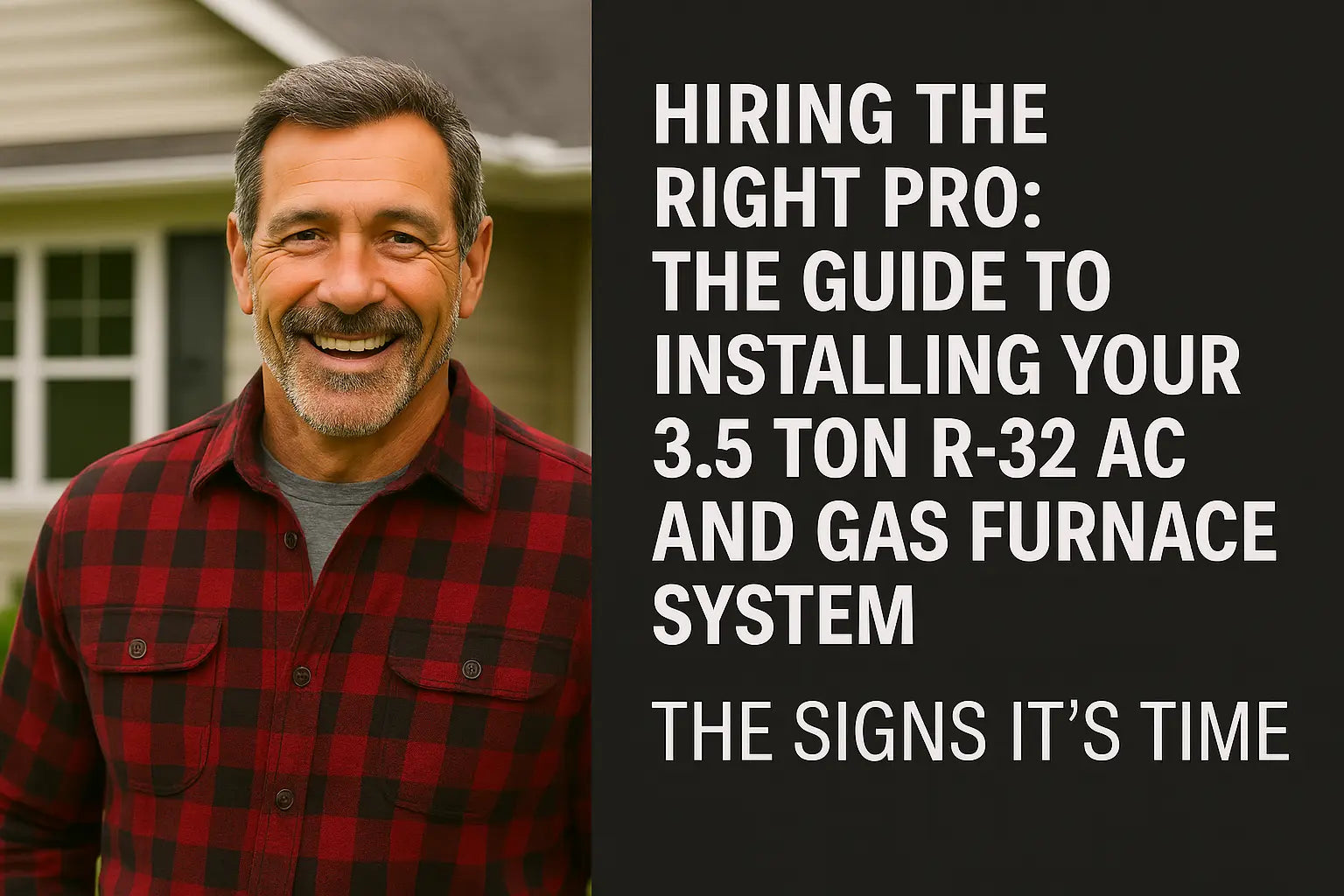Don’t Let a Good System Go to Waste
Hey folks, Mike Sanders here. I’ve said it before and I’ll say it again: you can buy the most efficient, best-built HVAC system on the planet—but if it’s installed wrong, it’s not worth a plugged nickel.
Now, if you picked up one of those 3.5 Ton R-32 AC and gas furnace bundles from The Furnace Outlet, you’re already ahead of the game. But don’t stop there—choosing the right installer is just as important as choosing the right equipment.
Let me walk you through what to look for in an HVAC pro so your system gets installed clean, safe, and built to last. 💪❄️🔥
Why Installation Quality Matters (a Lot)
An improperly installed HVAC system can:
-
Void your warranty
-
Lead to airflow issues
-
Spike your utility bills
-
Shorten equipment lifespan
-
Pose serious safety risks (especially with gas furnaces)
The DOE’s Energy Saver Guide puts it simply: “Proper installation is essential to achieving the advertised efficiency and performance of your HVAC equipment.”
Bottom line? Don’t just go with the cheapest quote—go with the best fit for your home and your system.
Step 1: Check for Licensing, Insurance, and Certifications
Your installer needs to be fully qualified—not just handy with tools.
Ask for:
-
State HVAC license number
-
General liability and worker’s comp insurance
-
EPA Section 608 certification (required for handling refrigerants like R-32)
-
North American Technician Excellence (NATE) certification for extra credibility
You can verify licenses using your state’s contractor licensing board. And if they’re not willing to show documentation—walk away.
The EPA’s official HVAC tech certification info breaks down what every refrigerant-handling pro should have on file.
Step 2: Ask About R-32 Experience
Not every HVAC tech is up to speed on R-32 refrigerant systems, especially older outfits who haven’t updated their training.
Be sure to ask:
-
Have you installed R-32 systems before?
-
Do you understand the safety protocols for A2L refrigerants?
-
Are your tools and gauges rated for R-32 pressures?
ASHRAE notes that while R-32 is safe when handled properly, it behaves differently from older refrigerants like R-22 or R-410A. A good installer will know this and have the right equipment for the job.
Step 3: Demand a Load Calculation (Not Just a Guess)
“Rule of thumb” sizing methods are outdated and can result in an oversized or undersized system—both of which kill efficiency.
Make sure your contractor performs a proper Manual J load calculation, which factors in:
-
Square footage
-
Insulation levels
-
Window quality
-
Sun exposure
-
Duct layout
If your installer can’t explain their sizing math, they’re just guessing—and you’ll pay for it later.
Need a reference? HVAC.com has a great explainer on what a Manual J calculation is and why it matters.
Step 4: Get It In Writing 📝
Everything—and I mean everything—should be in writing before any tools come out.
-
Full scope of work
-
Model numbers of equipment
-
Installation timeline
-
Total price and payment schedule
-
Warranty details
-
What’s included (thermostat, duct modifications, permits)
Compare bids carefully and don’t be afraid to ask questions. Reputable pros won’t mind—and sketchy ones will try to rush you.
Want a template to start from? Angi has a homeowner-friendly HVAC installation checklist you can print out and use during your hiring process.
Step 5: Follow Up on Permits and Inspections
Good contractors don’t just “hook it up and leave.” They handle permits, city inspections, and system commissioning.
If your installer tries to skip this step, that's a red flag. You could end up with a system that fails inspection or doesn’t meet code—especially with gas and refrigerant safety in play.
Ask for:
-
Local permit number
-
Proof of final inspection
-
Post-installation performance test results (like static pressure and airflow readings)
Bonus Tip: Ask About Maintenance
A quality installer should also offer or recommend a maintenance plan. Some even include a free first-year check-up.
-
Ask how to register your warranty
-
Get a maintenance schedule in writing
-
Find out what’s covered in annual visits
Maintaining your new 3.5 Ton R-32 AC and gas furnace system will help keep it running efficiently for years—and keep that warranty valid.
Mike’s Final Thoughts
Alright folks, here’s the truth: a great system installed badly is a bad system. Period.
Don’t gamble with your investment. Take the time to hire someone who knows what they’re doing, especially when it comes to gas lines, refrigerants, and airflow. Ask questions, get references, and trust your gut.
And hey, if you’re still in the shopping phase, I highly recommend checking out the R-32 3.5 Ton bundles from The Furnace Outlet. They’ve got the specs, support, and quality gear that makes for a smooth, worry-free install—as long as you hire the right pro.
Need more troubleshooting and installation tips for your 3.5-ton systems? Visit my guide right here!
Until next time, stay sharp and install smart. 🔍🔧🏡
- Mike, your cool HVAC neighbor







